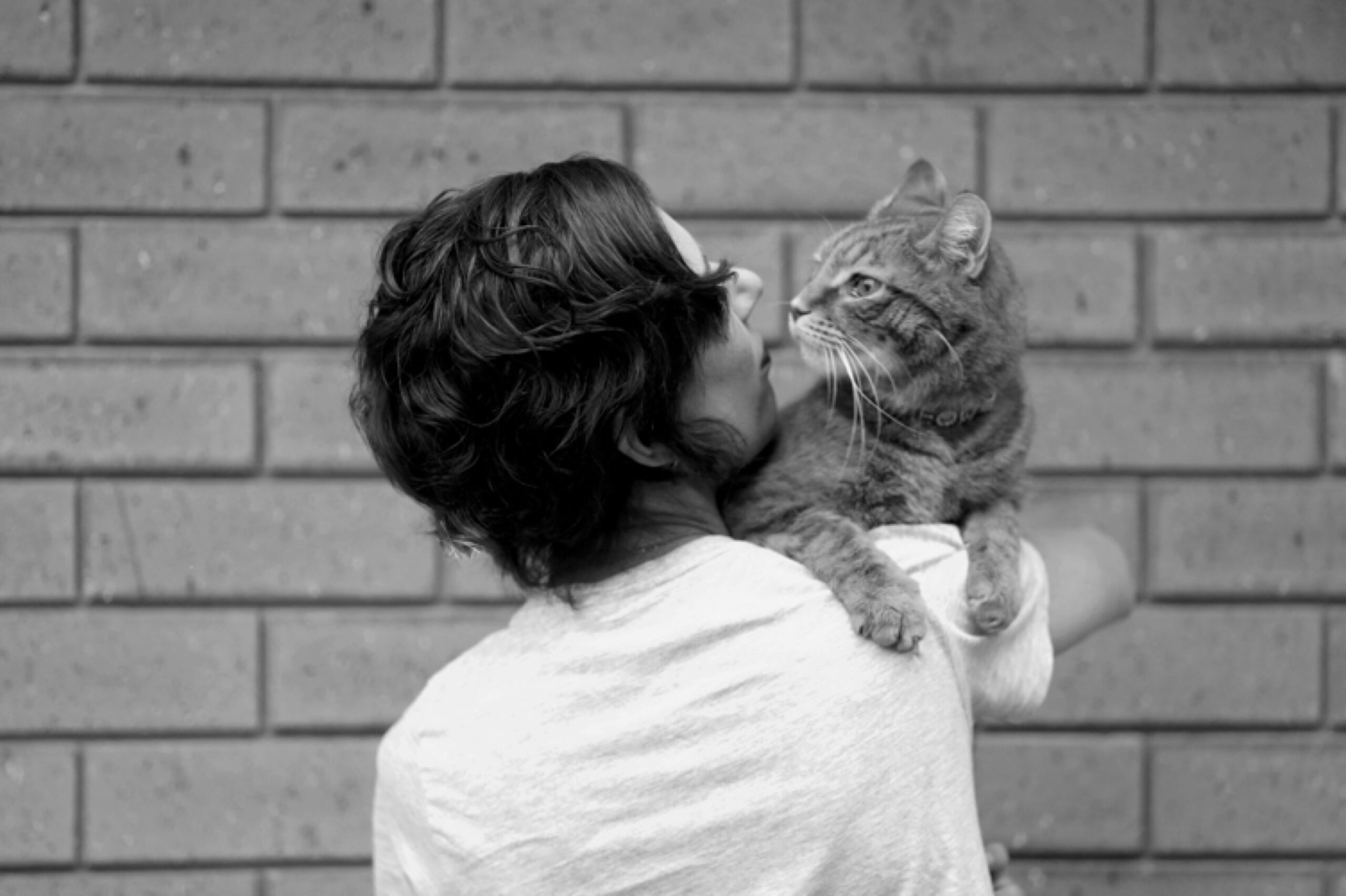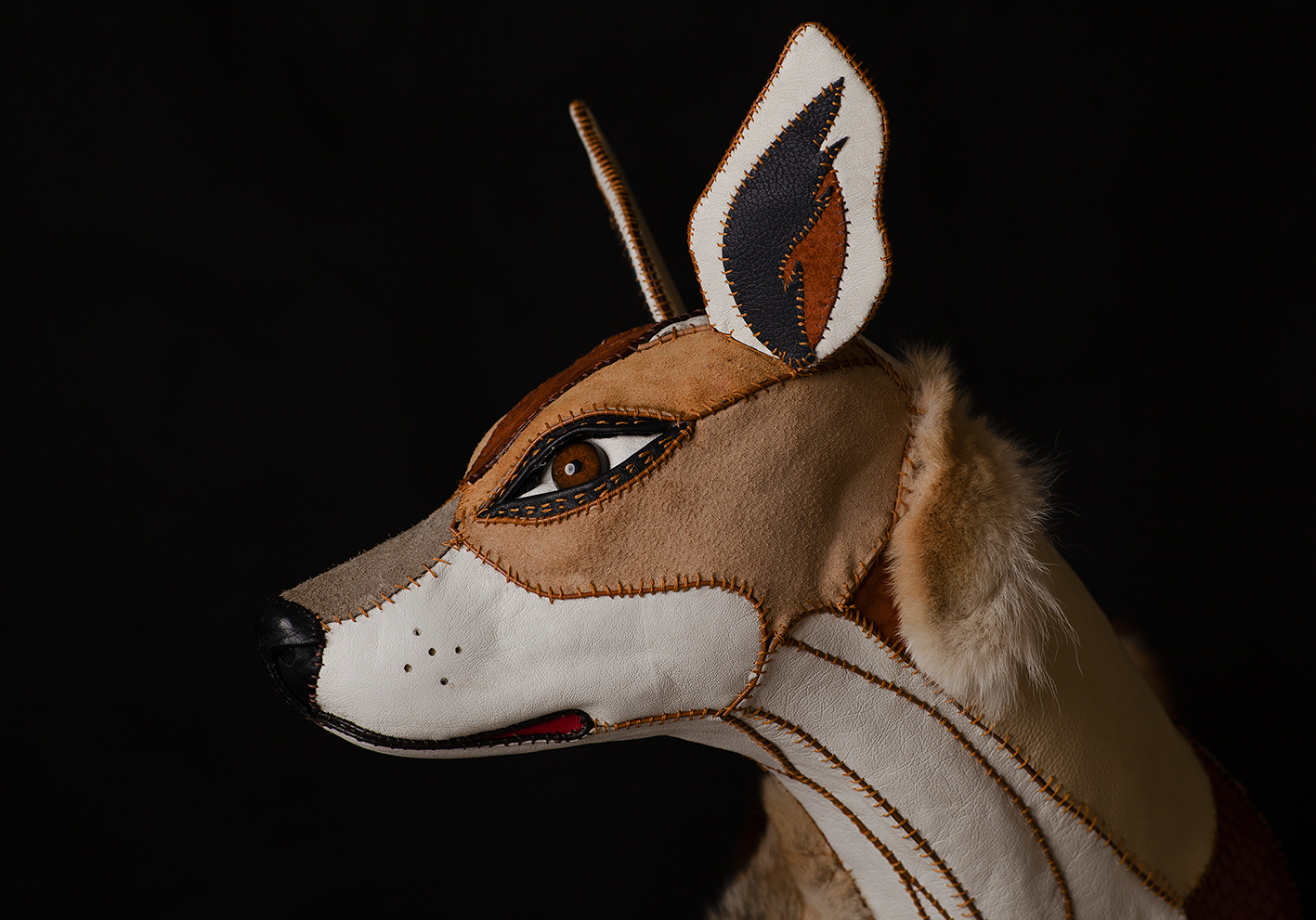Prepared by Teya Brooks Pribac
Images: Mawson Lake Photography Club
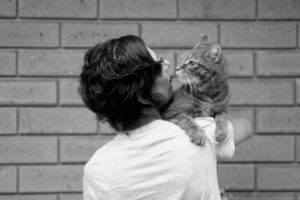
Nik Taylor is Associate Professor at the University of Canterbury, NZ. She is also, one could say, one of those people who are not afraid of difficult conversations.
I first came across Dr Taylor’s work when I was looking for material concerning the psychological impact of killing on those who, out of necessity in most cases rather than choice, perform it on a regular basis so that the rest of society can exercise their choices (of comestibles) at a safe distance from the sights, sounds and smells of the violent reality of the slaughterhouse. Bataille likened the slaughterhouse to a boat carrying cholera. “You feel isolated from society,” lamented Virgil Butler, an ex-slaughterhouse worker, “you know you’re different from most people. They have not seen what you have seen. And they don’t want to. They don’t even want to hear about it.”
From the secrecy and isolation of the slaughterhouse to those of living rooms and bedrooms, Dr Taylor’s latest project, which culminated in a book co-authored with Associate Professor Heather Fraser (Queensland University of Technology), focused on another taboo – a double taboo, in fact: domestic violence and the question of the nonhuman animal victim.
What inspired your research in this area?
NT: It’s an issue I have been interested in for a long time after first really coming across it when volunteering in an animal shelter in the UK. One of the other workers’ partners was a social worker and he asked us if we could foster a dog to help a woman who needed to get into a refuge to escape violence but wouldn’t leave without her dog. Following this, I did a PhD in animal studies that touched on ecofeminism and intersectional oppressions. This sparked my intellectual interest and the two – practical experience and intellectual curiosity – collided so I started doing research into the area. I’d done a number of projects on links between human and animal directed violence – broadly conceived, so including both the interpersonal issue of domestic violence and animal abuse, and structural issues like links between slaughterhouse work and violence – when I met Heather Fraser, a social worker who was at Flinders University at the time (as was I). Our mutual interest in violence, power and animals led to a strong collaboration and friendship that ultimately led to this book and the project it is based on. That project – Loving You, Loving Me: Animals and Domestic Violence – started after we were approached by the then manager of the Northern Domestic Violence Service in Adelaide who had instigated companion animal friendly housing allowing the women and children using their service to remain with their animals. She was interested in our doing more research about whether/how this mattered to the women. The interviews we did for this project formed the basis of the book, although the book goes beyond the interviews, when we realised we had an awful lot we wanted to say about the issues.

Why is it hard to talk about domestic violence, and how does this affect the way the issue is addressed on a broader societal level?
NT: As a society we don’t like to admit that our relationships, and our families, which are constructed in mainstream discourse as safe havens and to be aspired to by all, can be dangerous places. Acknowledging the level of domestic violence, which are chronically high in most countries, leads to some very difficult questions about power, gender, and privilege. Facing those issues would mean we have to face the fact that we need some pretty considerable changes in the ways our societies work and that’s tough to do. It’s also complicated by the fact that popular discourse stresses romance, love, equality and so on, in our personal relationships so those of us wanting to alter the conversation are fighting that too. As a result, we tend to address domestic violence (and animal abuse too) as an interpersonal issue – that it is the failing of an individual and so can be ‘cured’ by working with that individual. While that may be true it ignores the endemic structural oppressions and their supporting ideologies meaning we will only ever see tinkering at the edges of the issue, rather than wholesale change.
One of the concerns discussed in the book is society’s failure to recognise the complexity of domestic violence, which can put victims under further pressure. Victims may, for instance, be blamed for letting the abuse continue by staying in the relationship instead of simply leaving. But leaving is not that simple, you argue. Why?
NT: Yes, this leads on from my answer above. That pressure you mention is because we construct domestic violence and animal abuse as interpersonal failings. It means victims are asked why they stay, why they allow the abuse, why they put their children and animals at risk, all of which involves further blaming the victim. Leaving violence is complex. Sometimes it simply isn’t possible – the abuser might well have isolated the victims and/or control their finances, and/or threaten them or their children or animals with harm or death should they leave. They will also likely have destroyed the victims self-confidence through ongoing, concerted (often minor but repetitive) attacks leaving the victim feeling that s/he can’t do anything. There are many ways abusers exert control over victims so they aren’t in a position to leave. One less talked about aspect is that love and abuse do often co-exist. It’s often through love relationships that domination, coercion and control take place, often under the guise of romance and passion that is underscored by popular representations encouraging us to work at relationships, to give our all to love and to be loyal. It is this loyalty that can then be exploited by abusers to facilitate domination and abuse and to prevent individuals leaving. That said, we did find that love of companion animals can act as a catalyst to leaving violent relationships; that some of the individuals involved in our various studies told of how they could ‘handle’ or ‘accept’ the violence done to them but once it spilled over to their animals they realised they needed to leave.
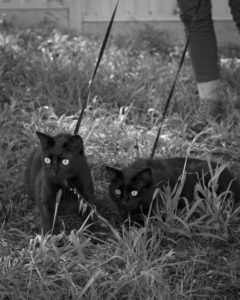
When one is leaving with a companion animal it becomes even more complicated, to the extent that some choose not to leave. What are the likely implications for companion animals in such a situation? Are there safe places and/or helpful initiatives or organisations that a survivor escaping with a companion animal can count on? How does one escape with a companion animal in the absence of family/friends that one can rely upon?
NT: In general, the implications for animals aren’t great. Many have to be surrendered completely or placed into kennels/catteries (which incurs expense that isn’t always manageable) or foster homes and some of these are later surrendered. When animals are surrendered they often have ‘behaviour problems’ due to fear and trauma and this can make it extremely difficult, if not impossible, to find them a new home. With shelters short of space already, you can imagine how hard it is to keep an animal who is difficult to home because she is terrified of men for instance. There are a heartening number of organisations acknowledging the importance of helping animals experiencing domestic violence, albeit usually framed as important because it lets the humans escape. So, for instance there is a growth in foster care services like Safe Pets, Safe Families in Australia and we are starting to see a number of domestic violence service providers build on site accommodation for animals, particularly in North America. There are also a growing number of organisations dedicated to raising awareness and facilitating networks to address human-animal linked domestic violence, such as Lucy’s Project. At the time of our study though, the Northern Domestic Violence Service was the only service we could find (in South Australia) that had on-site accommodation for animals that allowed the women and children using their service to live with their animal companions, and this was often following a period of separation while housing became available.
Attachment to nonhuman animals is hugely underrated, and humans who form deep, meaningful bonds with nonhuman animals continue to be seen as soft, emotional and equipped with other relational capacities that have historically not been prioritised in our detachment-based cold, dry world. Nevertheless, these relationships are very real for both parties involved – human and nonhuman. In fact, as you mention in the book, when people write anonymously about these relationships they allow themselves to express their true intensity, studies utilising physiological measures of attachment relations (as opposed to non-anonymous self-reporting) show similar results, and the human survivors you interviewed certainly confirmed it all. In some cases, relationships with companion animals are older than the victim’s kids are or that the relationship with the abusive partner is!
Were the victims surprised that you understand the bonds?
NT: I’m not sure they were surprised but they were certainly pleased that we did. Our understanding of that bond was often mentioned by them framed along the lines of ‘it’s good to talk to someone who doesn’t think I’m stupid for loving my cat so much’ or ‘it’s nice not to have to defend my feelings for my dog for once’ which says a lot about how we view human-animal relationships in the mainstream. And this needs to change and not just in the context of domestic violence. If we really want to see an end to interpersonal violence, in its many forms, then we have to start deconstructing the ideologies that underpin it. Part of these ideologies is the notion that humans matter more than other species and that undergirds hierarchical world views that, in turn, support violence against those (human or otherwise) lower down that hierarchy. We also need to move away from the notion that we are solely rational beings and recognise the importance of kindness, love and affection – for each other and for other species. It is this kindness and love that brings us together and acts in opposition to the divisive, competitive thinking that currently permeates most of our belief systems and similarly supports the normalisation of (both interpersonal and structural) regimes of power and violence.

Did they trust you immediately or were they reluctant at first?
NT: There was some reluctance, but we were lucky that we had someone from NDVS set up the interviews for us and essentially vouch for us. That started to break down some barriers. The rest of the barriers usually fell in the first 10 minutes or so when we pretty much talked to and interacted with their animals, often kneeling on the floor, or being climbed on (happily so!) while sitting on couches. The animals – as they usually are – were great ice breakers; they gave us a nice focal point to start talking to the women, and it seemed that when the women realised how animal focussed we were they were willing to open up about their deep feelings for their animals.
How much damage is the society potentially doing by trivialising relationships with nonhuman animals and how can we change that?
NT: Such a big question! I don’t think we can measure the damage we are doing as it exists on numerous levels. There’s the support of interpersonal violence and abuse I’ve talked about above; there’s the damage to the climate we do in the name of animal agriculture that is only possible through ignoring the systemic oppression and abuse of billions of animals worldwide; there’s the damage to human health through our continued reliance on other animals’ body parts as food; there’s the damage to whole areas of the globe through land clearing for grazing and there’s the support of criminal activities and organisations through poaching and trafficking. And that’s just off the top of my head! How we change it is a difficult question. I do think we are living through a momentous change with the rise of veganism clearly occurring and some of that is based on acknowledgment of animal suffering in animal industries, so there is some cause for hope. Beyond that, I think we all (activists, scholars) need to keep drawing attention to the material oppressions of animals, while at the same time drawing attention to the complexity of their lives and their right to live them unencumbered by human greed and mistreatment.
While you recognise the importance of these relationships for the humans and you also recognise the so-called Link, i.e. abuse of nonhuman animals being a red flag for future abuse of humans, in the book you emphatically move away from anthropocentrism and stress that within the framework of domestic violence nonhuman animals are victims in their own right. What threats do nonhuman animals face in such contexts? How can domestic violence affect their mental and physical health and wellbeing?
NT: They face very similar threats to humans – they can be victims of violence that takes very similar shape as that done to humans whether it be physical or emotional through the constant threat of violence and vigilance linked to attempts to avoid it. They are also at the risk of species-specific abuse – such as particular body parts like ears being targeted – and in some ways are more trapped than the humans who may not be able to leave the situation but can sometimes remove themselves from the immediate threat. They seem to respond in similar ways, so they show evidence of fear, pain and trauma that lasts beyond the violent episode (not that domestic violence should be thought of as episodic, it is ongoing and relentless), they often have stress and/or behavioural responses that can lead to problems for them later, e.g. as I mentioned earlier if they are particularly scared of one gender. These responses, as with humans, can last for a long period after they escape domestic violence and some never fully recover. They often need specific help in order to cope, and this can put added stress on foster carers or on their permanent guardians who themselves will likely be traumatised and stressed. Beyond that we don’t really know enough – because we have generally focussed on animal abuse being a red flag for human abuse there are only a few scholars considering the impacts on animals of domestic violence (and other forms of abuse). That needs to change. We need to understand their experiences better and figure out ways to help intervene, prevent and address violence done to them.
Do you remember any interesting stories of nonhuman animals healing after becoming free of the violent environment?
NT: Nearly all the animals we met had interesting stories although one sticks in my mind. She (dog) had a stress reaction that had led to severe skin problems, to the point her owner and vet thought she might have to be euthanised. Her owner persevered with her and she eventually became healthy again. She is now, according to her human, the ‘mother’ of the house; she looks after everyone there, staying with the children at night to make sure they feel safe enough to go to sleep for instance. Her human talked about how she had gone from a ‘timid, scared little puppy that would walk around with no confidence whatsoever’ to being the protector and that, after time and work on her issues, ‘now she’s free as well.’
We mentioned earlier that leaving is only the first step, and that the work of healing and rebuilding a life can take a while. Are there instances in which it may be better for the companion animal to stay somewhere else than with the human survivor?
NT: I think this is one of the really difficult conversations we need to have in this space as we move forward. For the most part I think animal and human will be happier together, but there will always be times when that isn’t the case. For instance, the human may be too stressed and traumatised to properly care for an animal whose behaviour is challenging due to their own trauma, or alternatively the human may have to work much longer hours due to financial stresses and this may not be the best situation for the animal who again, might act out due to boredom or trauma. There’s also the difficult issue of human survivors leaning too heavily emotionally on animals who are not, due to their own domestic violence experiences, equipped to deal with it properly. If we are going to make the animals central in our thinking in this area then we really have to do that even if it means opening up these potentially very unwelcome issues to scrutiny.
How can we as a society be of better help to victims of domestic violence – both human and nonhuman?
NT: We can acknowledge it and discuss it openly so we can start brainstorming responses; we can fund responses and research better; we can talk more to perpetrators and to victims and survivors in order to work out what is needed. Perhaps more importantly we can listen when they tell us and hopefully then act on their suggestions. We have decades of strong feminist research into domestic violence to draw on here in terms of both practical suggestions and the need to respond structurally instead of simply interpersonally. We have much less research on animal victims to draw on so we need to see more funding available here – funding to support victims as they leave and keep human-animal families together where appropriate; funding to do more research into the needs of animal victims; and funding to establish the kinds of help they need whether it be accommodation or interventions post-abuse.
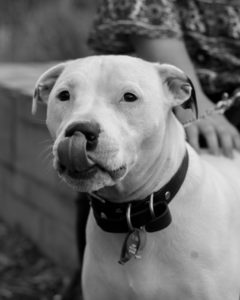
Is there a message for veterinary practitioners here?
NT: This is another tough one. Research to date suggests mandatory reporting isn’t necessarily the way forward here as it puts a burden on vets who likely will not have had training in recognising human directed abuse. I think the message is perhaps better directed at professional veterinary associations and is that veterinarians need training and spaces to safely consider their response (and many veterinary organisations are already doing this).
Throughout the book you tried to make the nonhuman animals visible as much as possible without jeopardising their and their humans’ safety. You also mention that you believe real animals, the “fleshy, smelly, fun, dangerous, beautiful, live animals” are often ignored in works that fall under the category of animal studies. I don’t really have a question about this. I just wanted to reproduce it because I strongly agree, but you’re most welcome to add further thoughts 🙂
NT: This was key for both of us as authors. We’re committed to research that tries to make animals visible and that doesn’t reproduce the silencing effects of mainstream research, whether it be in animal studies or without. As well as the ideological reasons for this, I would also add that it makes for fun research. Even on a topic as challenging as this one, we found meeting the animals and often hanging out with them for a few hours during the interview, to be one of the highlights of the process. There’s nothing quite like sitting on a sofa with a dog lying next to you being gently kicked in the legs whenever you stop fussing her – and we got to do this in the name of research!
In conclusion, can you say a few words about the “buddy system”? What is it and how did it help your research? Could this research system also be seen as a way of minimising the risk of vicarious trauma, which, as we know, may affect those working with victims of violence, human and nonhuman?
I first came across this term in Patricia Lopez and Kathryn Gillespie’s fantastic paper, A love story: for ‘buddy system’ research in the academy where they discussed their support for each other through difficult aspects of their research, in Kathryn’s case during her ethnographic research in animal ‘stock’ yards. It immediately resonated with what happened through the research for this book (and more broadly) between Heather and myself. The support and alliance we have not only helped us manage the challenges of the research (and there were a few of them; listening to grief stricken, angry victims recount their trauma while simultaneously witnessing their animals’ trauma for instance) but made the project stronger and the book better. We were able to safely test out ideas and writing with each other, while reminding each other that the research we do is worth the challenges.
Thank you, Dr Taylor.


